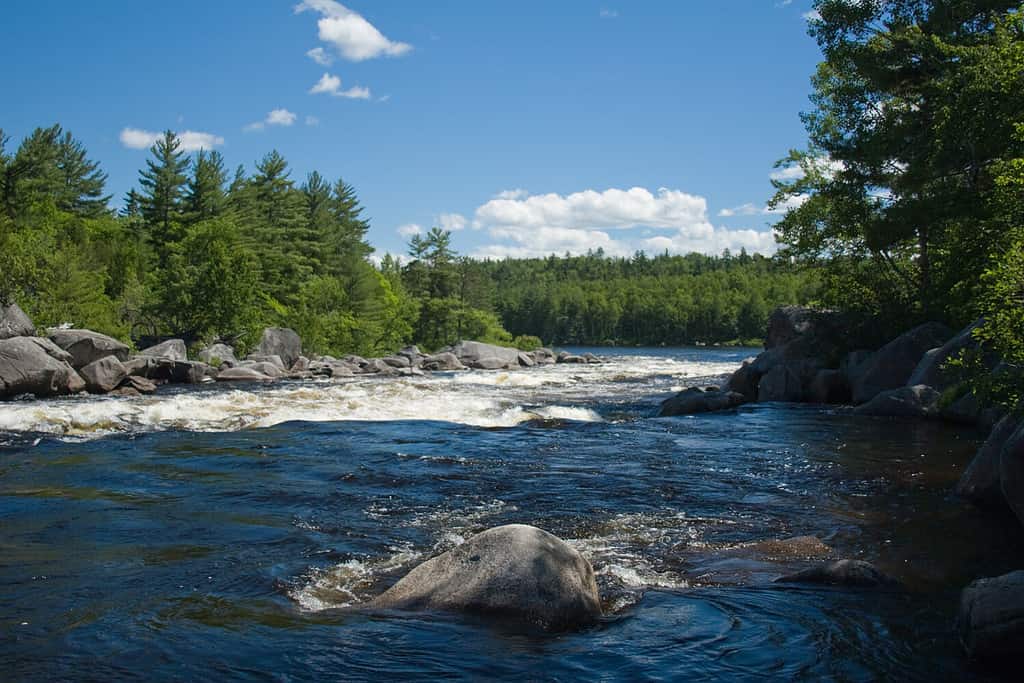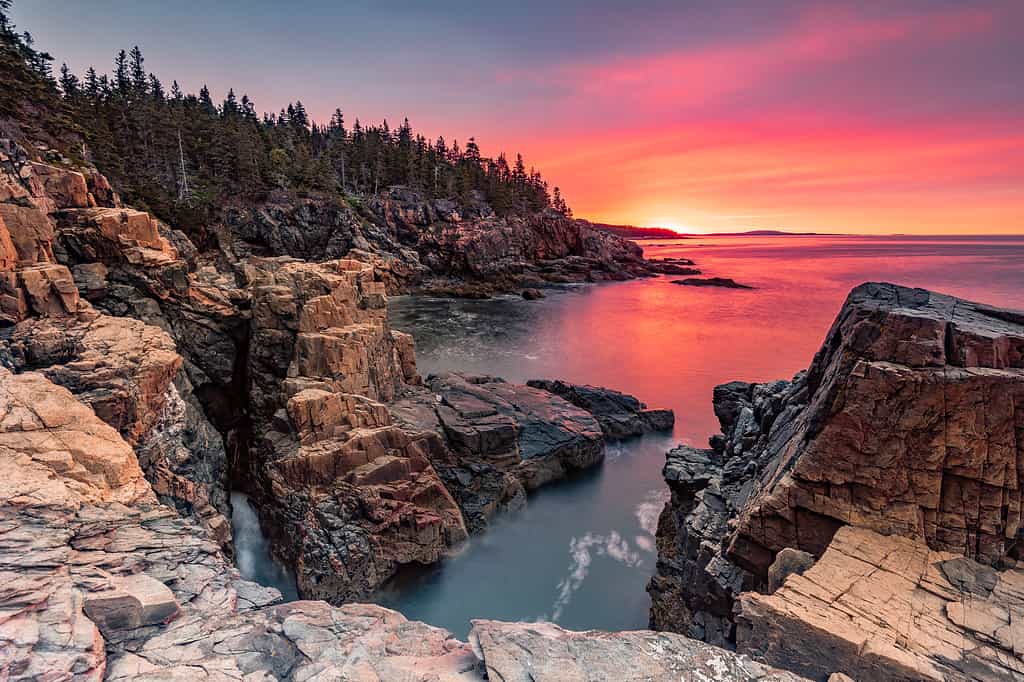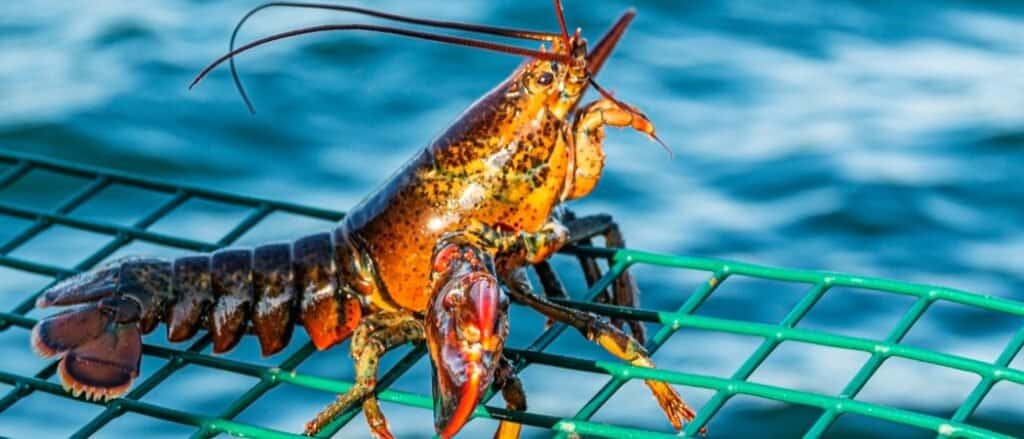Glance at any U.S. map, and you’ll notice how just a couple of states in the lower 48 stand out. One is Maine. It is the only state that borders just one other state — New Hampshire. The northern half of Maine is encompassed by the Canadian provinces of New Brunswick and Quebec.

Maine shares a border with only one state, New Hampshire.
©-Iznogood-/iStock via Getty Images
Considering its unique shape, exactly how tall is Maine?
From top to bottom, the state extends some 322 miles (518 km). The maximum distance from west to east is 207 miles (333 km). By comparison, nearby New York state is a tad taller at 330 miles. And western states such as California, at 1040 miles, and Idaho, at 479 miles, are far longer.
But when we’re talking distances, it isn’t just mileage that gives Maine its outsized image, but the character of why Maine is known as “the most rural state in the country.”

Maine’s Penobscot River is home to scores of game fish including smallmouth bass, brook trout, and landlocked salmon.
©Stephen G. Page/Shutterstock.com
Room to Roam
Many visitors to Maine venture no further than the state’s fabled “rock-bound coast.” The rustic resort towns that dot this 230-mile stretch of Atlantic shoreline are certainly a major draw for anyone seeking relief from urban congestion and pollution.
But the ambiance of its seascapes and lighthouses, along with restaurants specializing in native lobster, clams, and other local seafood delicacies are just one aspect of the state’s charm.
To appreciate what makes Maine stand out from the rest of New England and the Northeast, you need to view a topographical map of the state. That’s when you’ll realize just how vast and uninterrupted the amount of genuine wilderness that still covers it is. Even neighboring states like New Hampshire, Vermont, and New York can’t hold a candle to Maine’s bragging rights along these lines.

Acadia National Park is home to the highest mountains on the Atlantic Coast.
©Harry Collins/iStock via Getty Images
What makes the “Pine Tree State” so unique is that it has the greatest amount of forest cover of any state in the U.S. An estimated 89 percent of its 30,862 square-mile land mass consists of pristine woodlands. And that remains largely unoccupied, much like it was before European settlers arrived in North America.
A Hiker’s and Climber’s Paradise
A large part of this primeval forest runs up and down the slopes of the northernmost part of the Appalachian Mountains. Sitting in the middle of this mountain kingdom is Baxter State Park. It’s overlooked by Mount Katahdin, the highest in the state at 5,270 feet.
That’s also where the famed Appalachian Trail ends (the official start being in Georgia). For visitors who really want to “do” Maine right, the park offers a host of opportunities. That includes some 215 miles of trails, 337 campsites, and 209,644 acres of wilderness.
Where the Mountains Meet the Sea
Another of Maine’s truly spectacular destinations is a park that offers the seashore, woods, and mountains in a single locale. That’s Acadia National Park, which is home to the highest mountains on the Atlantic Coast, 26 in all. It combines the rugged beauty of the Maine coast with the majesty of its forests.
The 50,000-acre park was once the summer home of several millionaire families. But at the beginning of the 20th Century, a wealthy conservationist, George B. Dorr, began buying up land around Mount Desert Island, which he then offered to the federal government. Eventually, the area was turned into a national park with Dorr as its first superintendent. In 1929, he changed the name from Lafayette National Park to Acadia.
Today, the park offers visitors 60 miles of coastline, 33 miles of scenic roads, and another 45 miles of carriage roads. Add to that more than 150 miles of hiking trails.

In Autumn, wild blueberry plants turn a fiery red as they are ready to go dormant for the winter.
©KenCanning/iStock via Getty Images
Maine’s Two Best-Known Non-seafood Commodities
Despite the vastness of its forest cover, Maine still has enough room to grow two very important food crops. The largest of these commodities is the potato. The state currently devotes 63,000 acres to potato farming, most in its northernmost county, Aroostook. Maine’s potato industry employs over 6,000 people and accounts for total annual sales of more than $540,000,000. The Maine Potato Blossom Festival is one of the state’s biggest agricultural celebrations. Another big event is the Potato Feast Days fair hosted by the city of Houlton every autumn.
Another Maine-grown culinary favorite is wild blueberries, of which the state harvests approximately 40,000 acres’ worth. Many of those are exported in frozen form to supermarkets in other states and available to consumers year-round.
A History That Sets It Apart
What Maine doesn’t have, however, is a star representing it in the original U.S. flag. Unlike four of its New England neighbors that were part of the 13 colonies, it didn’t become a state until 1820. That was when it joined the union with “free state” status as part of the Missouri Compromise. Before that, it was part of Massachusetts, which it didn’t even share a border with.
About 40 percent of the state’s residents live in and around the state’s largest city, Portland.
Maine also has the distinction of having the easternmost town in the U.S. Its name: Eastport.
What Is Maine Most Famous For?

Over 100 million pounds of lobster are harvested in Maine every year.
©WoodysPhotos/Shutterstock.com
With all the natural wonders Maine has to offer, it is still most famous for its lobster.
Lobster has been a Maine staple from the time of the early European settlers. Although it was abundant, it wasn’t always considered a delicacy. In colonial times, lobster was fed to farm animals and prisoners.
But by the 1940s, lobster was considered a fancy dish. And that’s a ranking these crustaceans have maintained with both price and status.
Maine harvests over 100 million pounds of lobster each year.
Thank you for reading! Have some feedback for us? Contact the AZ Animals editorial team.








